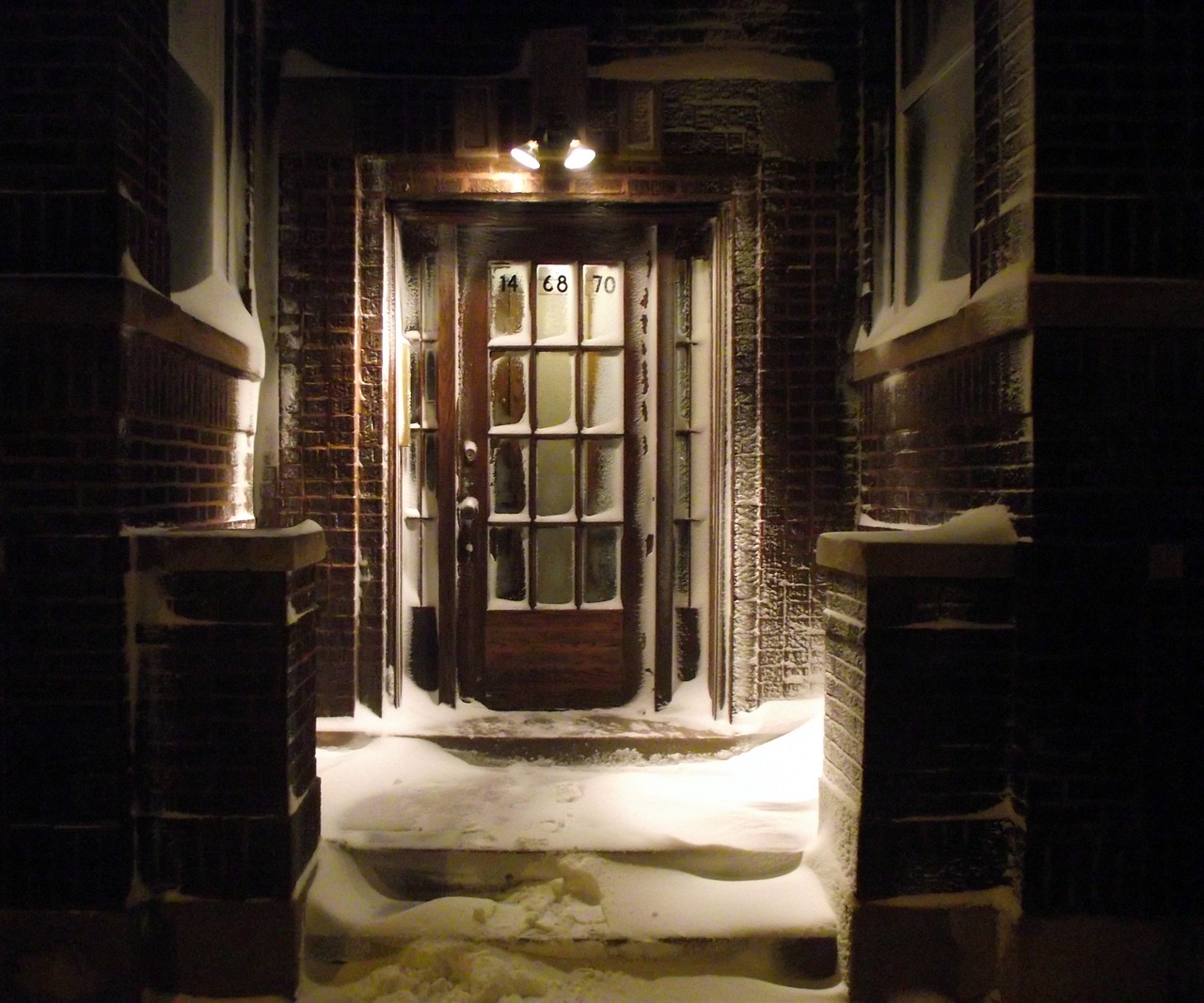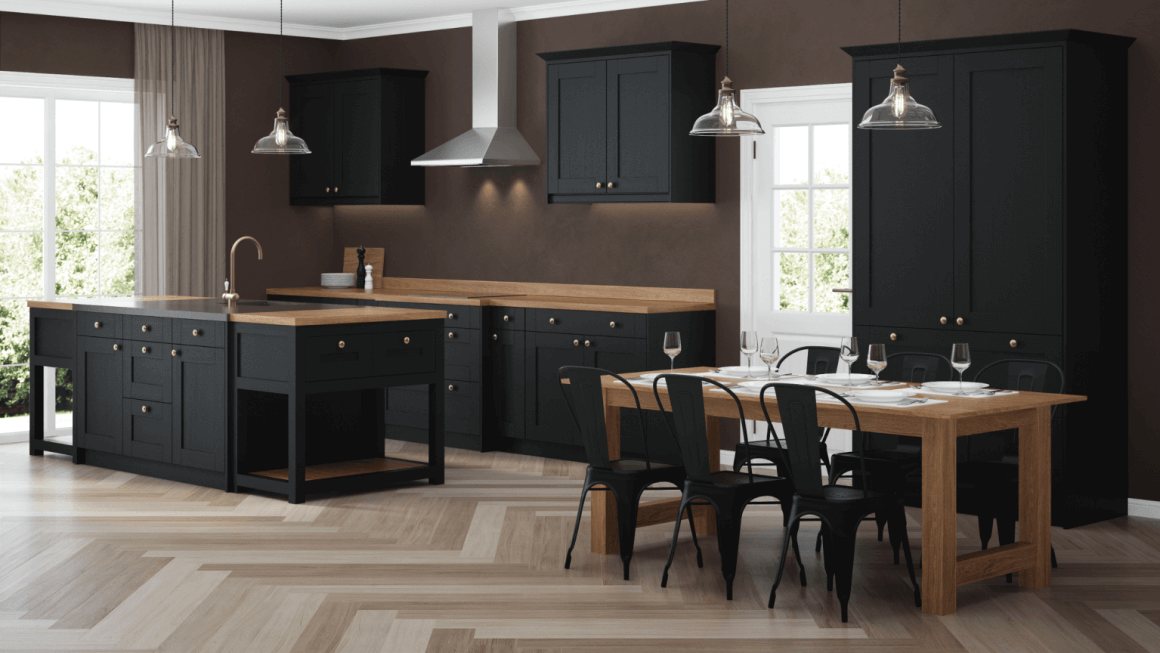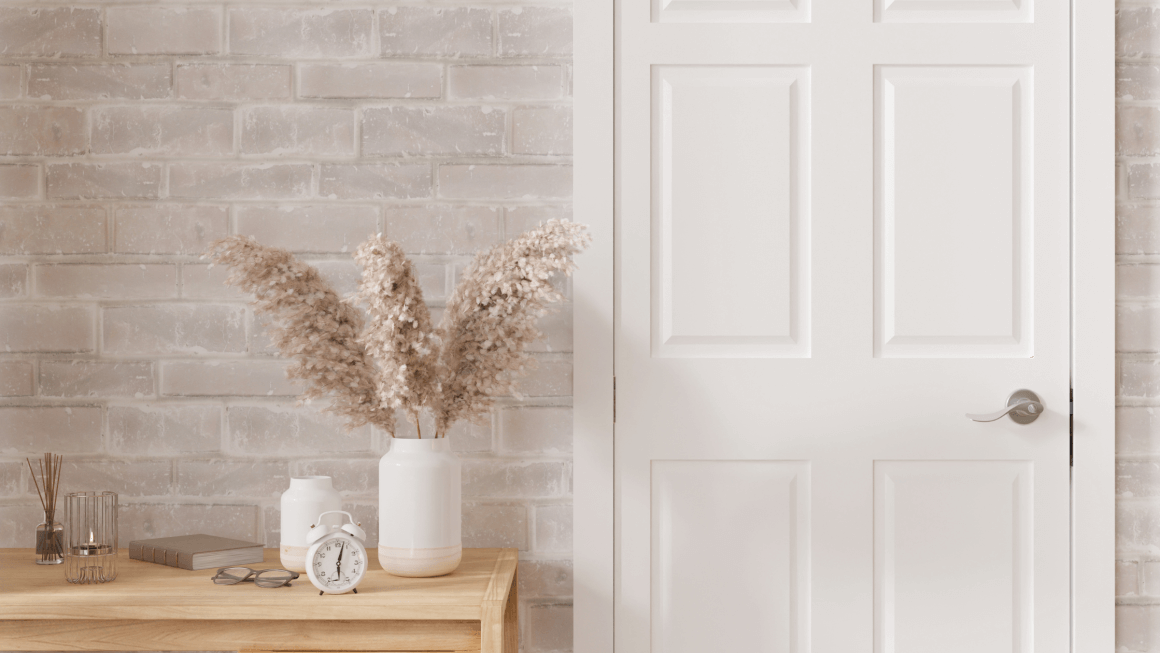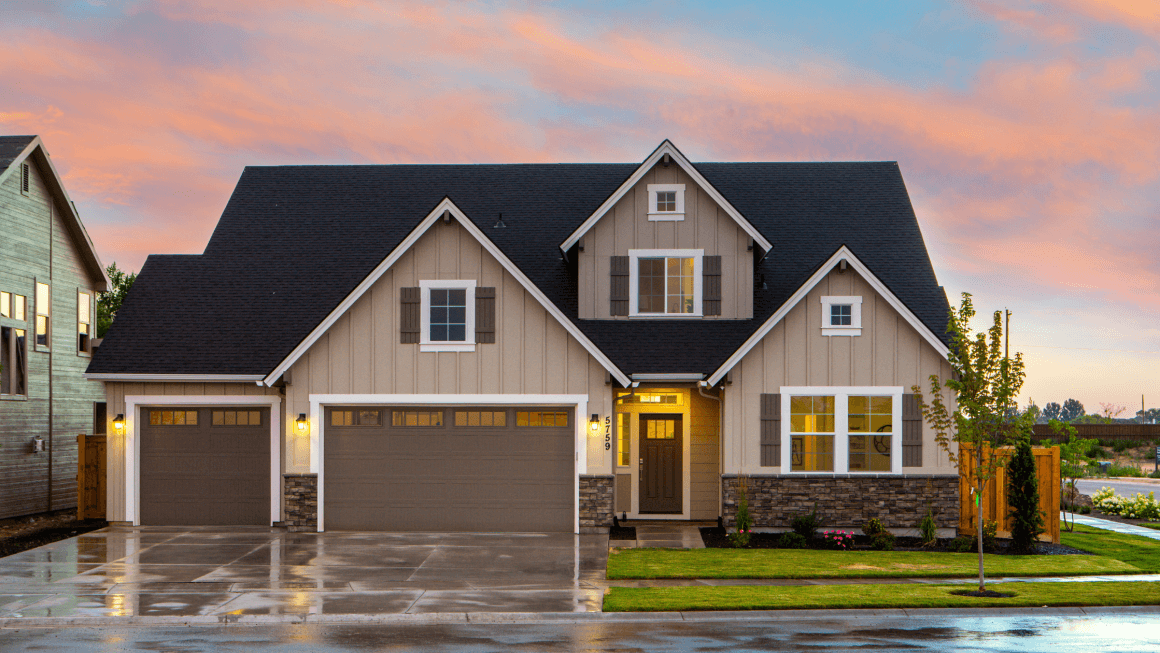Winter is a season that can have a seriously deleterious effect on your home and the items within it. Among the most important of these items are doors – of both the internal and external variety. In response to the changing climate, wooden doors exhibit a range of symptoms, which, if not addressed, will steadily worsen, gradually inhibiting a door’s ability to function.
Let’s examine a few of the more common winter ailments, and see what steps we might take to protect our doors against them.
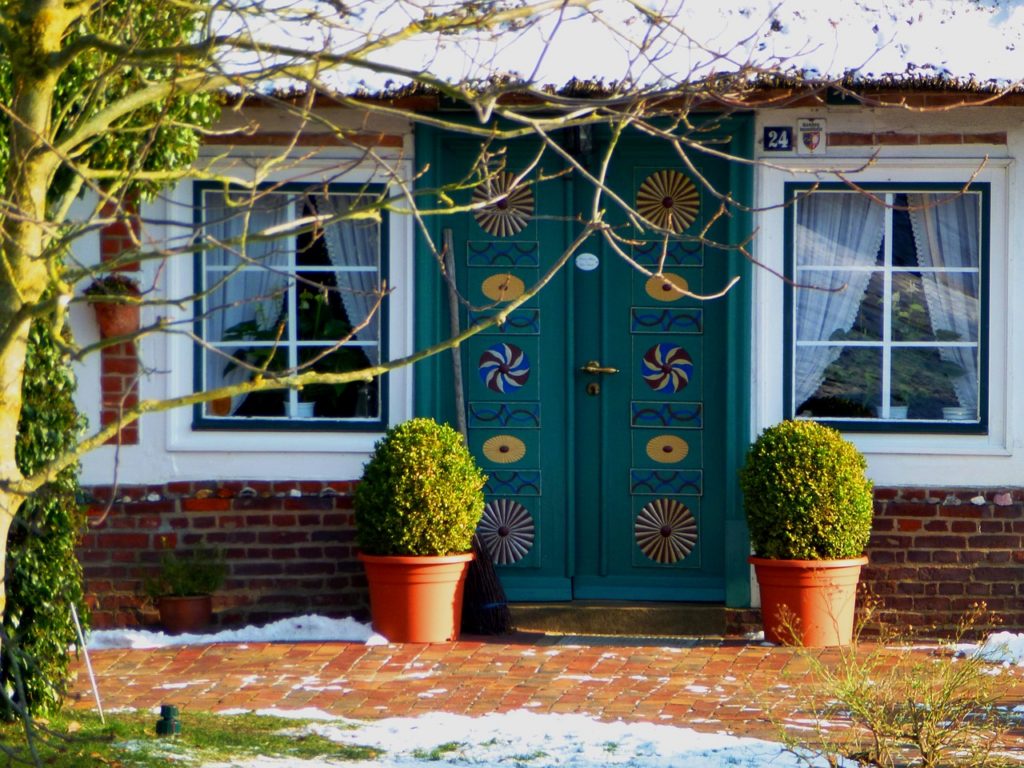
Why do doors change in winter?
Before we consider taking action against a particular problem, it’s important that we identify its causes. When the weather begins to cool, doors will deteriorate in two main respects. Each comes about because of wood expansion and contraction in response to changes in temperature and moisture.
Sticking
When the weather gets chillier, the wooden fibres which make up your door will begin to contract. When things get warmer again, those same fibres will expand. After a while, this cycle of expansion and contraction will cause a door to become the wrong size and shape for its frame. Since the space around a door is just a few millimeters wide, it only takes a little bit of warping before the door begins to catch on the frame of the door. In some cases, this can make opening and closing the door difficult. In most cases, a warped door will begin to catch on the floor first – thanks to gravity. The warping effect will also cause the hinges to work their way loose, causing the door to fall away from them.
Cracking
As well as doors that stick, we should also be on the lookout for doors that crack. Cracking occurs because of a drop in humidity on the inside of our homes – which comes about not as a direct result of the wintry weather, but as a result of the heating systems, we use to counteract it. Dry air will absorb moisture from any available source – including that which is stored inside your door – and this can cause undesirable warping and cracking.
While cracking isn’t as practical a problem as sticking, it has a greater impact on the way a door looks. This effect is at its most noticeable along the inner panelling of a wooden door that’s been painted white. The topmost surface of paint, once it’s dried, will become quite inflexible. Thus, when the wood beneath the surface begins to expand and contract, the paint will be dragged along with it. Since it’s at this joining section within the panel that the differences in moisture, temperature, and orientation between the two adjacent sections of wood will be at its most distinct, it’s here where the ugly cracking effect begins to manifest.
How can I prepare my doors for cold climates?
Luckily, there are a few ways in which we might battle the destructive power of cold weather. Let’s touch upon each of them.
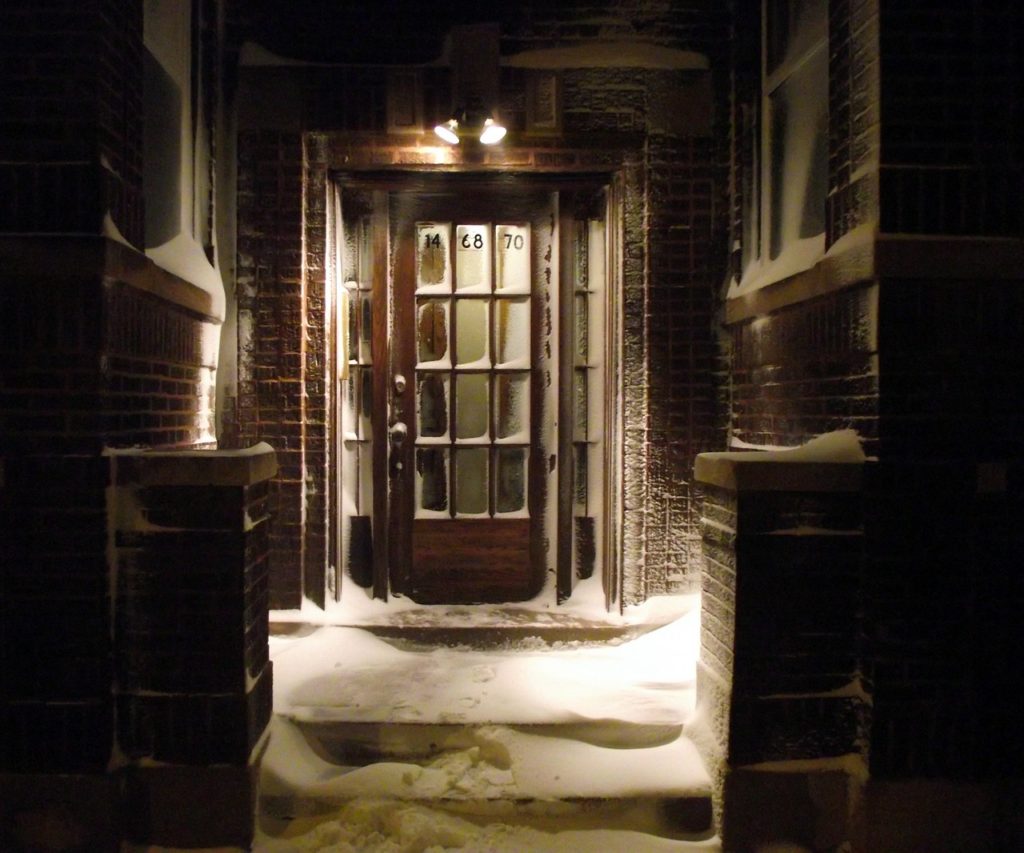
Sealing
When gaps begin to appear on and around your door, you’ll want to be sure those gaps are properly sealed. This can be done with the help of sealing strips, which can sit around the edges of the door, and acrylic sealing paste, which can be applied to said edges. Either will collapse slightly whenever the door is closed, squeezing to fill any gaps. This will help to preserve the look of the door, but it’ll also help to improve soundproofing and prevent cold air from passing through.
Finishing
As well as sealing the spaces around the edges of our doors, we should also be sure to protect the wood itself from the effects of moisture drainage. We can do this with a coat of wax, which will act like a sort of moisturiser for your door. It’ll soak into the wood itself, and help to form a barrier between the moisture within the door and the surrounding dry air. What’s more, it’ll improve the look of the wood itself.
Before applying a coat of finish, you’ll want to ensure that your door is as clean as possible and free from blemishes, which you won’t want to seal underneath a coat of finish. Do this by running a damp cloth over the wood, ensuring that any visible pieces of dirt are totally removed from the wood. Be sure to let the wood dry before adding a layer of wax, as you don’t want to trap excess moisture inside the door, as this will do more harm than good.
Insulating
As well as preventing cold air from passing through the doorway via the gaps in the side of the door, we should also be concerned with heat energy that passes through the door through convection. This is especially troubling when it comes to sliding doors for cold rooms, as they take up more wall space, and are therefore expected to do more of the work keeping warmth inside.
It’s worth insulating doors for winter, via draught-excluding strips along the bottom and sides. But it might also be worth making an upgrade to more substantial, thicker, and denser doors, which will be better able to keep warm air on one side of the door.
Tightening
As well as protecting the wood of your door itself, and ensuring that it keeps cold air out of your home as effectively as possible, you’ll want to be sure that it’s as securely attached to the frame as possible. Do this by tightening the hinges, which, as we’ve mentioned, will loosen over time in response to warping.
It’s important to perform this tightening slowly – and therefore manually, with a screwdriver rather than a drill. This is because of the danger of going ‘too far’, and twisting the screw further than necessary, which can strip the socket, and render the screw ineffective. The last thing you’ll want to do is make more work for yourself, so be sure to proceed carefully.
Humidifier
In order to ensure that the air in your home is kept at an ideal moisture level, it might be wise to invest in a humidifier – preferably one with a sensor that allows it to automatically adjust to maintain the desired level of humidity. Be sure, however, that you don’t over-humidify, as this will do more harm than good.
Keeping humidity constant in your home will help to extend the lifespan not only of your doors but also that of any other pieces of wooden furniture you might have in the home.
Which are the best doors to see me through the winter?
With all of this in mind, how should we go about choosing the doors which are best able to cope with the environmental pressures of winter?
Patio Doors
During winter, the biggest point of vulnerability for your home will be doors that contain a lot of glazing. Invariably, patio doors will fall into this category, as being able to see out into your garden will help to create an impression of space that we all crave.
The best patio doors for cold weather are almost always those which offer double-glazing (or even triple glazing). This technology works by sandwiching a layer of inert gas, like argon, between two layers of glass. An arrangement like this will form an effective barrier against heat loss, which is why it’s so popular in patio and external French doors for cold climates.
Front Doors
Like patio doors, front doors will be required to keep the cold of the outdoors at bay – and to remain secure, and resist warping. For this reason, the best front doors for cold weather are those which combine an engineered core with an outer layer of attractive veneer. While each of the individual lengths of wood that make up the core will change shape in response to changes in temperature, they’re unlikely to change shape in the same way – and so each piece will tend to mitigate the warping effect of its neighbours.
If you’re shopping for wooden exterior doors for cold climates, then you should be aware that regular maintenance will help to preserve the insulating properties of the door, and keeping it looking as good as possible. Fortunately, this needn’t be a massive hassle – the occasional re-application of finish should be all that’s required to keep cracks and warping at bay.
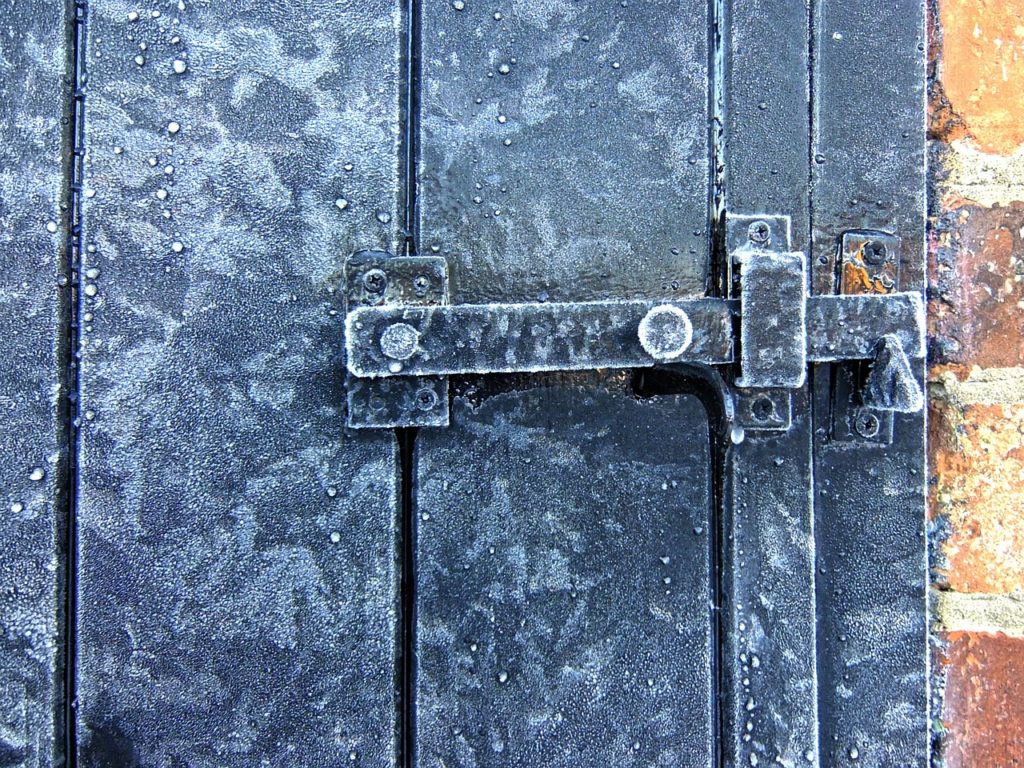
In Conclusion:
Changes in temperature can inflict noticeable harm on wooden doors – and so it’s essential that we anticipate and guard against that harm. Through the steps we’ve outlined in this article, it’s possible – and even straightforward – to do so.
If you’re unsure of how best to keep your doors in good condition through the winter – or you’re wondering whether a door you’re considering will survive the season intact, then be sure to get in touch with us – we’ll be able to offer our advice on any prospective purchases, and help you to keep your doors look their best, even after they’ve had to cope with a long spell of wintry weather!



